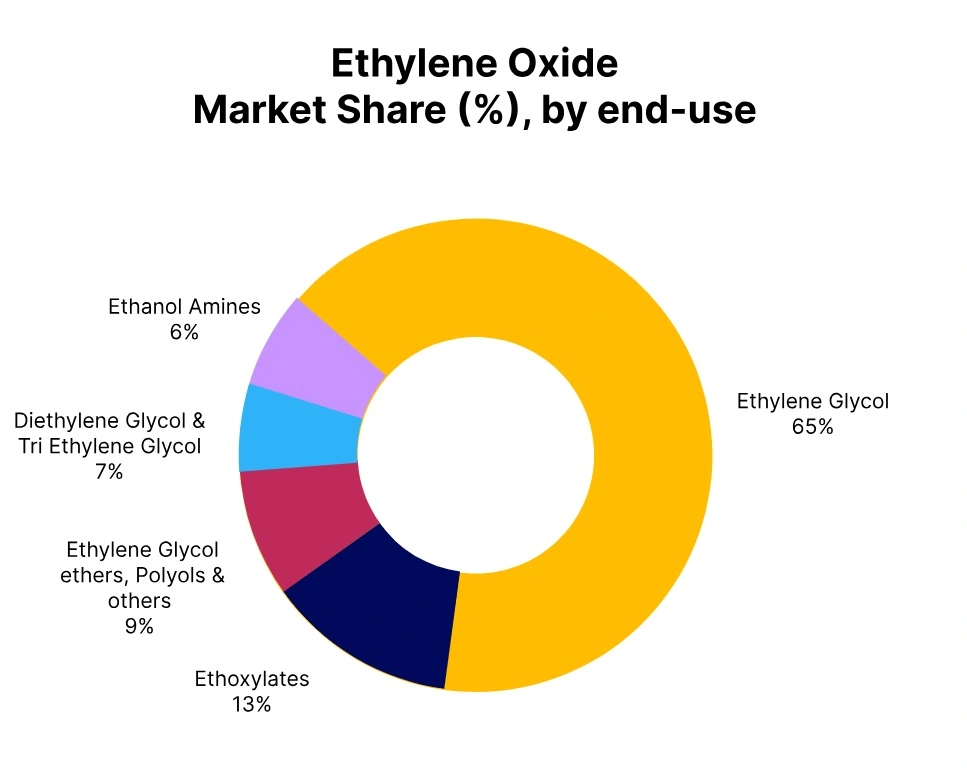Price-Watch’s most active coverage of Ethylene Oxide price assessment:
- 99-100% Ex-Nanjing, China
- 99-100% FD Hamburg, Germany
- 99-100% FD Rotterdam, Netherlands
- 99-100% Ex-Dahej, India
Ethylene Oxide (EO) Price Trend Q3 2025
In Q3 2025, the global Ethylene Oxide (EO) market showed uneven performance across regions. Western markets such as Germany and the Netherlands showed moderate price declines due to sluggish demand from automotive, construction, and industrial chemicals sectors amid cautious procurement and soft industrial output.
European regions were comparatively stable with slight downward pressure, as stable feedstock costs failed to offset weak consumption signals. However, Ethylene oxide price trend improved in Europe towards the end of Q3 2025.
Nevertheless, Asia-Pacific markets experienced notable weakness with prices falling in China and India on account of oversupply, inventory overhang, and subdued downstream demand from Ethylene glycol, surfactants, and textile sectors.
In general, the market remained reasonably balanced underpinned by stable industrial activity, stable feedstock supply, and moderate freight conditions. Regional supply chain fundamentals and disparate downstream consumption trends continued to drive pricing during the quarter.
Germany
Ethylene Oxide (EO) Domestically Traded Price in Germany, Industrial Grade FD Hamburg.
In Q3 2025, Ethylene Oxide (EO) price in Germany has shown moderate softness, reflecting sluggish demand from automotive, construction, and industrial chemical sectors. FD Hamburg prices ranged between USD 1,200–1,300 per metric ton, marking a quarterly decline of 4.19%.
However, in September 2025, Ethylene Oxide (EO) prices in Germany have increased by 2.10% from the previous month, suggesting limited recovery amid cautious procurement by downstream polyether and non-ionic surfactant producers.
The Ethylene Oxide (EO) price trend in Germany has been shaped by stable cracker supply, softened feedstock Ethylene costs, and high industrial electricity prices pressuring margins. Overall, market conditions have remained subdued, with pricing constrained by weak downstream consumption and cautious operating rates.
Netherlands
Ethylene Oxide (EO) Domestically Traded Price in the Netherlands, Industrial Grade FD Rotterdam.
In Q3 2025, the Ethylene Oxide (EO) price trend in the Netherlands has been influenced by limited feedstock Ethylene volatility, subdued demand from polymer, resin, and chemical derivative sectors, and cautious procurement by Dutch converters. Ethylene Oxide price in Netherlands has trended lower, reflecting broader European market weakness. FD Rotterdam prices ranged between USD 1,200–1,400 per metric ton, marking a quarterly decrease of 3.86%.
However, in September 2025, Ethylene Oxide prices in the Netherlands have risen by 1.68% from the previous month, reflecting modest buyer activity amid ample supply from the Rotterdam petrochemical hub. Market sentiment has remained soft, with limited upside in pricing expected until industrial output strengthens.
China
Ethylene Oxide (EO) Domestically Traded Price in China, Industrial Grade Ex-Nanjing.
In Q3 2025, Ethylene Oxide price in China has declined notably, reflecting weak demand from downstream Ethylene Glycol, surfactants, and polyether sectors. Ex-Nanjing prices ranged between USD 830–900 per metric ton, marking a quarterly decrease of 6.96%.
In September 2025, Ethylene Oxide prices in China have eased by 0.48% from the previous month, indicating continued softness amid cautious buyer sentiment and inventory overhang. The Ethylene Oxide price trend in China has been influenced by softened feedstock Ethylene costs and subdued industrial activity.
Chinese converters maintained low operating rates, particularly in construction and textile chemical sectors. The market has remained oversupplied, with limited restocking activity observed. Overall, short-term pricing outlook has stayed bearish, pending signs of recovery in downstream demand.
India
Ethylene Oxide (EO) Domestically Traded Price in India, Industrial Grade Ex-Dahej.
According to Price-Watch, In Q3 2025, the Ethylene Oxide price trend in India has been shaped by softened feedstock Ethylene costs and cautious operating rates among converters, particularly in textile and homecare chemicals. Ethylene Oxide price in India has declined moderately, reflecting weak demand from downstream surfactants, detergents, and polyether industries.
Ex-Dahej prices ranged between USD 970–1,020 per metric ton, reflecting a quarterly decrease of 5.10%. In September 2025, Ethylene Oxide prices in India have slightly eased by 0.07% from the previous month, highlighting continued market softness amid inventory buildup and limited export interest. Overall, the market has remained oversupplied, with short-term recovery dependent on downstream demand improvements.



